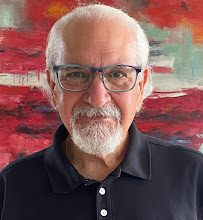History creates an understanding of how we have become who and what we are today. This section from Robert Wheeler's history of Ohio City provides some beautiful insights into why Cleveland/Greater Cleveland's economic and social landscape is what it is today.
"Many of the changes which happened on the west side of the Cuyahoga River were typical of the period from 1820 to 1878. The Ohio City area underwent these changes in more rapid succession than most areas of the country and certainly more quickly than any other within the Western Reserve. In the space of one decade (1830-1840) the northeastern portion of Brooklyn Township was transformed from a farming area to an industrial village. In the space of two decades (1840-1860) it had achieved an identity as a place for workingmen to live - workingmen born in Germany and Ireland. By the beginning of the 1870s the town had become a prosperous suburb which aspired to become an equal partner. The social and economic history of the Ohio City area militated against parity between the two sides, however. Several elements fixed the main contributions of the near west side. First, the Indian treaty postponed settlement and ultimately gave Cleveland an edge in population which was not overcome. Second, once settlement began on the west side, the geography of the river’s mouth and placement of the canal terminus on the east side made it the commercial center and left industrial development to the west side. Therefore, its major strength was that west side residents led Cleveland into the industrial revolution and into the economic commitment to the lake port. Unfortunately, some of the potential expansion of the west side was restricted by the lack of adequate transportation between the two sides. Some residents, remembering the brilliant future predicted for Ohio City in the 1830s, were disappointed in the inferior position which the area occupied. These residents did not see that within the realities of the period Ohio City had made significant, lasting contributions to the social and economic life of the entire region."
From: Pleasantly Situated on the West Side: An Economic and Social History of the Ohio City Area, 1796-1878.
By Robert A. Wheeler
Subscribe to:
Post Comments (Atom)

No comments:
Post a Comment